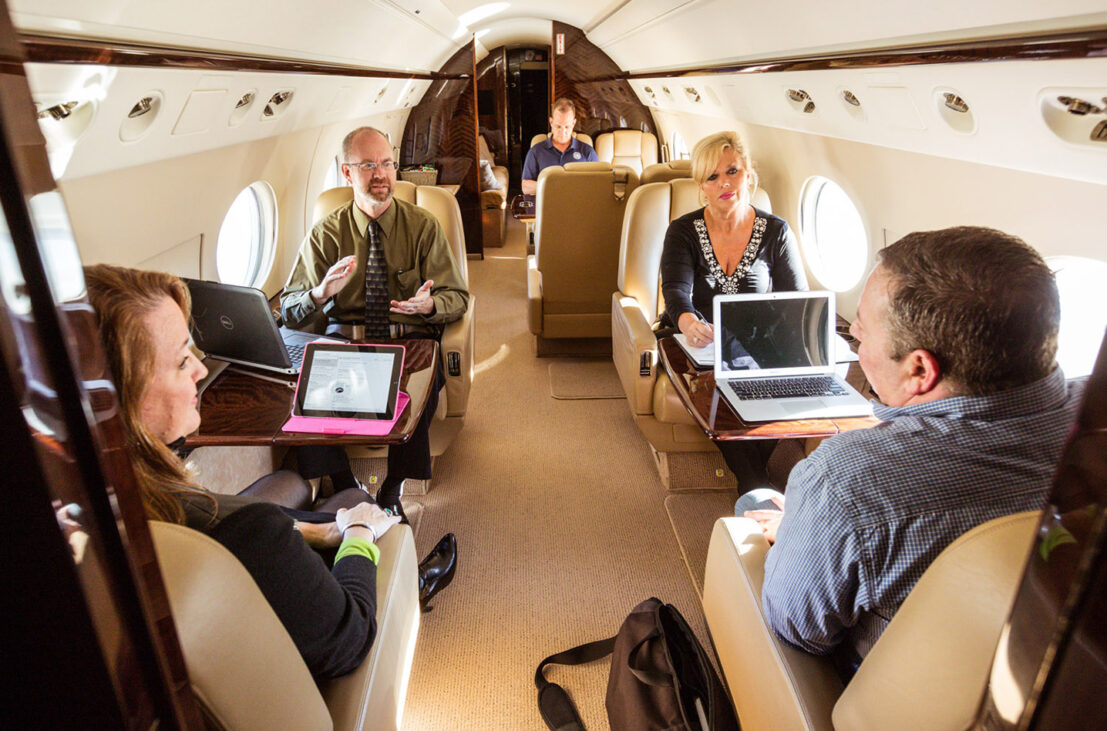
April 18, 2023
New connectivity solutions that not only maintain passengers’ productivity while in flight, but also keep flight crews updated to the latest flight planning information, were discussed during a Thought Leadership NBAA News Hour, “Inflight Connectivity Beyond the Cabin,” sponsored by SmartSky Networks.
“Flight crews [require] data that can feed weather planning, real-time aircraft status, performance tracking and mission planning,” said panel moderator Doug Carr, NBAA senior vice-president for safety, security, sustainability and international affairs. “At the same time, passengers require video conferencing and live streaming, telephone and VoIP calls and the ability to manage large file transfers.”
This demand, combined with data and connectivity security requirements, can quickly overstress the data pipe to and from the airplane. As new 5G-capable air-to-ground networks come online, beamforming allows connectivity providers to focus bandwidth to specific aircraft as needed.
“This ensures each aircraft gets the full amount of bandwidth at all times and that it’s not shared with other aircraft within that geographic area,” said Rich Pilock, SmartSky’s vice president for product management. “This avoids issues caused by contention [for available bandwidth] when performing operational data applications.”
Such solutions are important as even more uses for connectivity come to market. SmartSky Vice President for Digital Aviation Carol Gabica discussed the ability to connect aircraft dispatchers, flight crews and even FBOs to a common flight planning and predictive weather platform.
“Knowing what lies ahead at your destination, both on the ground as well as in the air, saves time and fuel,” she said. “This [technology] is used at the [FAA] command center and NASA. It prepares pilots for what lies ahead and offers enough time to make alternative approach plans before wheels up,” while also updating flight crews en route on the latest conditions.
In addition to providing necessary bandwidth, routing off-aircraft data through centralized platforms can also help improve network integrity and security.
“[The aircraft] is not even touching the internet,” said Sean Reilly, SmartSky’s vice president for air transport digital solutions. “Airlines have been doing this for a long time, but now we can start looking at it in the bizjet space. The company’s IT department can manage that data to and from the aircraft [and] not need to worry about aircraft network security programs.”
Many transcontinental aircraft are equipped with both air-to-ground and satellite-based connectivity options, Reilly added, as ground-based systems typically offer reduced network latency and greater protection against signal interference.


 International Business Aviation Council Ltd.
International Business Aviation Council Ltd.